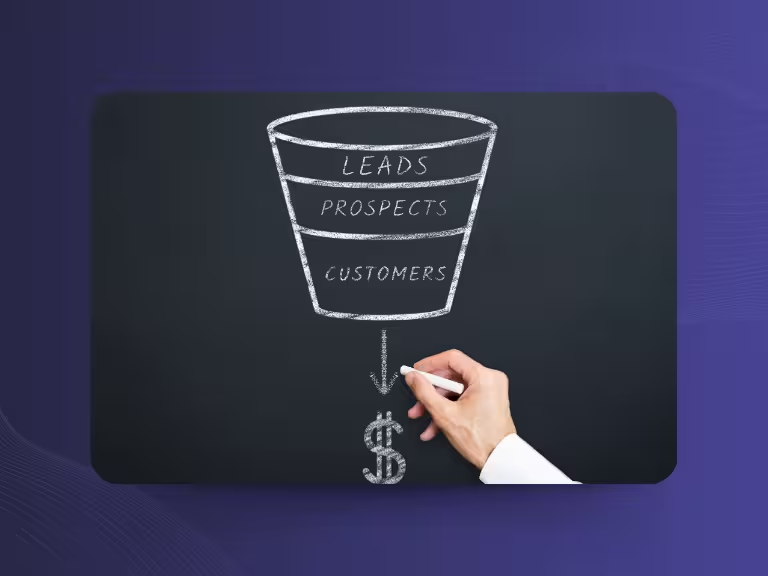In today's digital world, companies face the challenge of reaching potential customers and earning their trust. A proven method for this is lead magnets – attractive offers that provide value in exchange for contact information. This article shows you how to strategically use lead magnets to generate more qualified leads and build long-term customer relationships.
From definition and creation to technical, legal, and strategic aspects, you'll learn everything you need to know for successful lead generation. A GDPR-compliant AI meeting assistant like Sally can also help by automatically documenting important customer conversations and integrating them into your lead nurturing processes.
What Are Lead Magnets? Definition and Significance
Definition of Lead Magnets
Lead magnets are specially developed offers designed to capture your target audience's attention and obtain their contact information. They work on the principle of value exchange: you offer relevant, free content or services, and in return, you receive email addresses or other contact details.
These offers can take various formats – from digital content like eBooks, checklists, webinars, and templates to analog materials like flyers or invitations to exclusive events. The goal is always the same: to generate qualified leads who have genuine interest in your offering.
Why Are Lead Magnets So Important?
Lead magnets form the foundation for successful digital marketing and modern sales. They solve a central problem: How do you gain the trust of potential customers and build a relationship with them before they're ready to buy?
The value proposition is the key to success. While traditional advertising is often perceived as disruptive, lead magnets offer genuine benefit. This leads to significantly higher conversion rates, as people are more willing to share their contact information when they receive something valuable in return.
Furthermore, lead magnets play a crucial role in the buying decision process. They enable you to reach potential customers already in early phases of their customer journey and guide them toward purchase decisions through targeted communication.
Understanding Your Target Audience: Foundation for Successful Lead Magnets
Target Audience Analysis as the Foundation
The success of your lead magnets depends largely on how precisely you know your target audience. Without deep understanding of your potential customers' needs, challenges, and desires, you won't be able to create relevant offers.
Various methods are available for comprehensive target audience analysis: surveys among existing customers, social listening to observe discussions on social media, Google Analytics data analysis, or direct interviews with representatives of your target audience. This information helps you develop precise buyer personas and design your lead magnets accordingly.
Tailoring Lead Magnets to Fit
With detailed target audience insights, you can create lead magnets that are perfectly tailored to the needs of different customer segments. For example: while beginners need a fundamental guide that explains complex topics clearly, experienced users prefer a detailed checklist or advanced template.
This segmentation enables you to maximize the relevance of your offers. Instead of creating a generic lead magnet for everyone, you target different user groups specifically, thereby increasing the likelihood that they'll share their contact information.

Creating Lead Magnets: Tips for Content, Design, and Distribution
Selecting the Right Format
Choosing the right format is crucial for your lead magnet's success. Among the most popular and effective types are:
eBooks are excellent for comprehensive topics and position you as an expert. Checklists are particularly popular with users seeking quick, practical assistance. Webinars enable direct contact with your target audience and build trust through personal interaction. Templates offer immediate practical benefit and save your leads time.
The decision for a format should be based on three factors: the topic you want to address, your target audience's preferences, and available resources. A complex B2B topic might require a comprehensive eBook, while a simple tip works better as a short video series.
Design and User Experience
Your lead magnet's design often determines success or failure. Clarity, readability, and clear structure are fundamental principles. Users should be able to recognize at first glance what value they'll receive and how to use it optimally.
Mobile optimization is particularly important, as a large portion of users consume lead magnets via mobile devices. Fast loading times and intuitive navigation are additional success factors that determine user experience.
Simultaneously, designing your landing pages plays a crucial role. Clear, compelling call-to-actions (CTAs) and focused presentation of your value proposition lead to higher conversion rates.
Distribution and Promotion
The best lead magnet is useless if no one finds it. Therefore, a well-thought-out distribution strategy is essential. Use various channels: your website, social media platforms, email newsletters, and partnerships with other companies or influencers.
Integration into comprehensive marketing funnels and multi-channel strategies is particularly effective. You shouldn't view the lead magnet as an isolated element, but as part of a larger marketing automation strategy.
Don't forget tracking and performance analysis. Metrics like conversion rates, download numbers, and click rates give you important insights on how to optimize your lead magnets.
Beyond Basics: Technical, Legal, and Strategic Aspects
Technical Implementation and Tools
Modern marketing tools significantly simplify the creation and management of lead magnets. Platforms like HubSpot, Mailchimp, Thrive Leads, or LeadPages offer comprehensive functions for creating forms, landing pages, and automated email sequences.
Integration into your CRM system is particularly important to automatically qualify leads and start personalized follow-up campaigns. Here, for example, an AI meeting assistant like Sally can provide valuable services by automatically documenting important customer conversations and integrating this information into your lead nurturing processes.
Marketing automation enables you to create various scenarios: depending on which lead magnet a user has downloaded, they receive different email sequences perfectly tailored to their interests.

Legal Framework and Data Protection
When handling personal data, strict legal regulations apply that you must absolutely observe. The GDPR in Europe and similar laws like the CCPA in the USA specify how you may collect and use contact data.
Basically, you need explicit consent from users before you may process their data. This usually happens through an opt-in process with corresponding checkboxes. Transparent privacy policies and clear information about data usage are indispensable.
Privacy-friendly form design also means only collecting data you actually need. Often an email address is completely sufficient – additional fields can negatively impact conversion rates.
Feedback and Continuous Optimization
Successful lead generation is an iterative process. User feedback is a valuable instrument for improving your lead magnets. Short surveys after download or A/B tests of different versions give you important insights into your target audience's preferences.
Data-driven optimization means regularly analyzing engagement metrics like open rates, conversion rates, and the quality of generated leads. This data helps you continuously improve both content and design.
Monitoring the entire customer journey is particularly important: Which leads acquired through specific lead magnets later become customers? This insight helps you identify the most effective formats and content.
Conclusion and Action Recommendations: How to Use Lead Magnets Effectively
Lead magnets are the key to modern, successful lead generation. They enable you to build trust, provide value, and develop long-term customer relationships. Several factors are crucial: clear target audience focus, valuable content, and professional design form the foundation for successful lead magnets.
Technical implementation with modern tools not only facilitates creation but also tracking and optimization of your campaigns. At the same time, legal compliance and data protection must not be neglected – they not only protect against legal problems but also strengthen your target audience's trust.
For successful start-up, I recommend beginning with detailed target audience analysis and selecting the appropriate format for your first lead magnet based on that. Connect this with automated email sequences and implement GDPR-compliant processes from the beginning.
Don't forget continuous optimization: regularly analyze your lead magnets' performance and actively gather feedback. Only through constant improvement will you be successful long-term and turn interested leads into satisfied customers.
Modern tools like Sally can help automate the entire process and document important customer conversations – ensuring no important lead is lost and all information is available for successful conversion processes.

Test Meeting Transcription now!
We'll help you set everything up - just contact us via the form.
Test NowOr: Arrange a Demo Appointment



